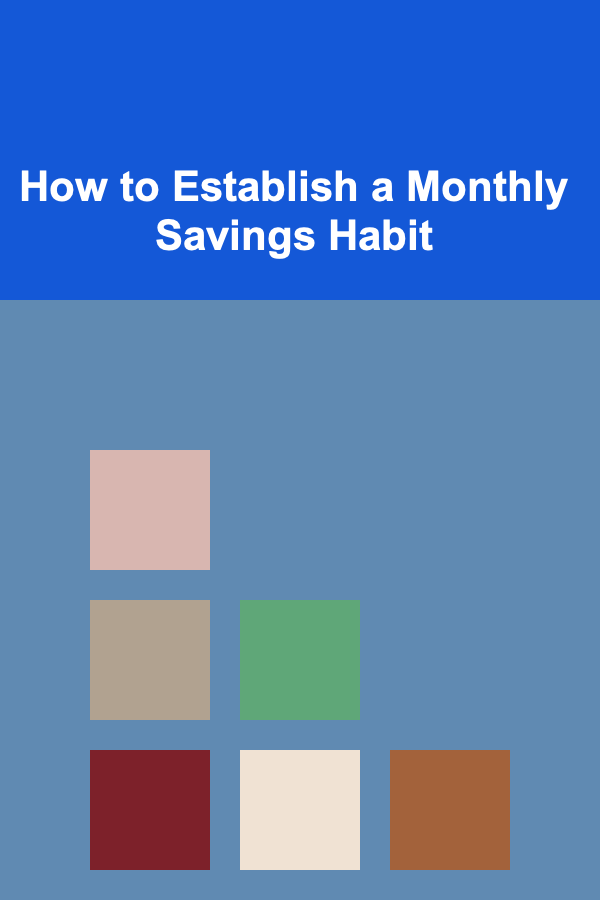
How to Use a Gratitude Planner to Break Negative Habits
ebook include PDF & Audio bundle (Micro Guide)
$12.99$7.99
Limited Time Offer! Order within the next:
Not available at this time

Gratitude is often seen as an abstract concept, something to practice sporadically during times of reflection or when life feels particularly generous. However, research consistently shows that gratitude is much more than a fleeting feeling---it is a powerful tool for mental health and personal transformation. One of the most effective ways to harness the power of gratitude is through the use of a gratitude planner. When used strategically, a gratitude planner not only cultivates an ongoing practice of thankfulness but can also help individuals break negative habits, reshape thought patterns, and improve overall well-being. In this article, we will explore how a gratitude planner can be used as a tool to interrupt negative cycles and help establish healthier, more positive routines.
The Link Between Gratitude and Negative Habits
Negative habits are often the result of ingrained thought patterns, emotional responses, and past experiences. These behaviors can range from procrastination and unhealthy eating to excessive worrying or negative self-talk. Breaking free from these habits requires more than just willpower---it necessitates a shift in mindset, a recalibration of the way we perceive ourselves and the world around us. This is where gratitude can play a pivotal role.
Gratitude, in essence, is the practice of recognizing and appreciating the positive aspects of life, no matter how small or insignificant they may seem. It fosters a sense of abundance, counteracting feelings of lack, fear, or inadequacy that often fuel negative habits. Additionally, gratitude creates a shift in attention. Instead of focusing on what's wrong or what's missing, gratitude encourages us to focus on what's good and what's already present. This shift in focus is key when it comes to breaking negative habits, as it disrupts the cycle of negativity that often underlies these behaviors.
How Gratitude Affects the Brain
Gratitude doesn't just change how we think---it literally changes the structure and function of our brains. Neuroscientific research has shown that when we practice gratitude, our brains release dopamine and serotonin, two chemicals associated with happiness and well-being. These neurotransmitters help to reduce stress, improve mood, and enhance overall mental health. This is particularly important when attempting to break negative habits, as it creates a more positive internal environment, which makes it easier to adopt new behaviors and let go of old ones.
Moreover, gratitude helps to activate the prefrontal cortex, the area of the brain responsible for decision-making, impulse control, and self-regulation. This area is crucial when it comes to controlling negative impulses and replacing them with healthier choices. The more we practice gratitude, the stronger this neural pathway becomes, making it easier to stay committed to positive change.
How a Gratitude Planner Works
A gratitude planner is a tool designed to help individuals systematically practice gratitude on a daily basis. Unlike a generic journal, which might serve as a catch-all for thoughts and reflections, a gratitude planner has a specific structure that guides users in focusing on gratitude each day. These planners typically include sections for writing down things you're grateful for, reflections on positive experiences, and space for setting intentions or goals.
In addition to cultivating gratitude, many gratitude planners include prompts or exercises that can help users reflect on their thoughts, emotions, and behaviors. This is where the connection to breaking negative habits becomes clear. The act of regularly identifying and appreciating positive experiences forces individuals to shift their attention away from negative thoughts and behaviors. Over time, this practice can weaken the neural pathways associated with negative habits and reinforce the neural circuits related to healthier, more positive actions.
Key Elements of a Gratitude Planner
To effectively break negative habits using a gratitude planner, it's essential to have a structured approach. A well-designed gratitude planner typically includes the following elements:
- Daily Gratitude Prompts: These are questions or statements that guide you in reflecting on the positive aspects of your day. Common prompts include, "What are three things you're grateful for today?" or "What made you smile today?"
- Reflection Space: This section allows you to expand on your gratitude practice by reflecting on your feelings, thoughts, and experiences related to gratitude. It helps you identify patterns and recognize the areas of your life that you're most thankful for.
- Habit-Tracking: Many gratitude planners also include a space for tracking specific habits or goals. This could be a section dedicated to tracking the progress of breaking negative habits or establishing positive ones.
- Weekly or Monthly Reviews: At the end of each week or month, some planners include a space for reviewing your progress. This reflection helps you see how your gratitude practice has evolved over time and whether it has helped you make progress in breaking negative habits.
- Affirmations and Positive Self-Talk: Gratitude planners often include space for writing affirmations or engaging in positive self-talk. This can help you build resilience against negative self-perceptions and reinforce healthier patterns of thinking.
- Mindfulness Exercises: To complement gratitude, many planners incorporate mindfulness exercises. These exercises encourage you to focus on the present moment, which is essential for overcoming negative thought cycles and behaviors.
How to Use a Gratitude Planner to Break Negative Habits
While the specifics of gratitude planners may vary, the process of using one to break negative habits can be broken down into several clear steps. Here's how you can start using your gratitude planner to break free from negative cycles and create healthier, more positive habits.
1. Identify the Negative Habit
The first step in breaking a negative habit is recognizing it. Take time to reflect on your behaviors and identify which ones are causing distress in your life. These could be habits like procrastination, excessive social media use, overeating, or negative self-talk. Write down the habit in your gratitude planner, along with why you want to break it. Be specific about how this habit is impacting your life and why it no longer serves you.
2. Replace the Negative Habit with Positive Behaviors
Once you've identified the negative habit, the next step is to replace it with a healthier alternative. Gratitude practices can help you do this by shifting your focus away from the problem and toward solutions. For example, if you struggle with procrastination, you can use your gratitude planner to focus on the small wins and accomplishments you make each day, helping you stay motivated to tackle larger tasks.
In your gratitude planner, jot down positive behaviors you'd like to incorporate into your routine. These could include things like setting small, achievable goals, practicing mindfulness, or taking short breaks when needed. Be sure to focus on what you can do instead of focusing on the negative habit you're trying to eliminate.
3. Commit to a Daily Gratitude Practice
One of the most powerful ways to break negative habits is to develop a daily practice of gratitude. Set aside time each day to fill out your gratitude planner. This could be first thing in the morning or before bed. The more consistently you practice gratitude, the more you'll rewire your brain to focus on the positive.
Use the gratitude prompts to identify things you're grateful for and write them down. These could be as simple as "I'm grateful for my health" or "I'm grateful for the support of my family." Over time, you'll notice that you're more focused on the positive aspects of your life, which can help diminish the power of negative habits.
4. Track Your Progress
Tracking your progress is an essential part of breaking negative habits. In your gratitude planner, use the habit-tracking sections to note how often you engage in the behaviors you want to change. Celebrate small victories along the way, such as successfully completing a task without procrastinating or choosing a healthier meal.
You can also use your planner to track the moments when you fall back into old habits. Reflect on these moments with kindness and curiosity, and ask yourself what triggered the behavior. This reflection can help you understand the underlying causes of the habit and develop strategies for overcoming it in the future.
5. Practice Self-Compassion
Breaking negative habits can be challenging, and there will likely be setbacks along the way. It's essential to practice self-compassion when you slip up. Use your gratitude planner to write positive affirmations or encouraging messages to yourself. Recognize that progress takes time and that each day is an opportunity to get closer to your goals.
6. Review and Reflect Regularly
At the end of each week or month, review your gratitude journal to see how far you've come. Reflect on your progress and note any positive changes in your thoughts, behaviors, and emotions. Did you find it easier to break the negative habit as time went on? Did your gratitude practice help you stay motivated? These insights will help you stay on track and refine your approach to breaking negative habits.
Conclusion
Using a gratitude planner to break negative habits is an incredibly effective and empowering strategy. By consistently practicing gratitude, you can shift your focus from negativity and self-doubt to positive growth and transformation. The key is to approach the process with patience, self-compassion, and commitment. Over time, you'll find that gratitude not only helps you break free from harmful habits but also creates a foundation of positivity that can support your overall well-being. So, grab a gratitude planner today and start your journey toward a healthier, happier, and more fulfilling life.

How to Choose the Best Marketplaces for Selling US Products
Read More
How to Establish a Monthly Savings Habit
Read More
How to Organize Your Entryway with Smart Storage Solutions
Read More
How to Save Space in Your Bathroom with Over-the-Door Storage
Read More
How to Set Up a Pet-Friendly Backyard with Fencing
Read More
The Ultimate Guide to Affordable Options for Pet Grooming and Vet Care
Read MoreOther Products

How to Choose the Best Marketplaces for Selling US Products
Read More
How to Establish a Monthly Savings Habit
Read More
How to Organize Your Entryway with Smart Storage Solutions
Read More
How to Save Space in Your Bathroom with Over-the-Door Storage
Read More
How to Set Up a Pet-Friendly Backyard with Fencing
Read More